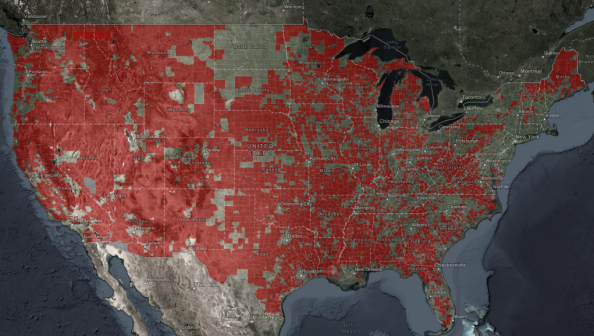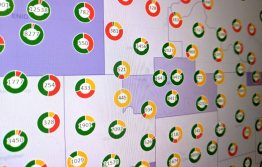Want to act on broadband? Start here.

As we seek to rebuild a more equitable America coming out of the pandemic, much has been made of the transformational potential of aid flowing from the federal government to states and localities across the country. In no area is this opportunity more evident than in the struggle to get every American connected to reliable, affordable broadband. As co-chairs of a new national task force on equitable broadband access, we know we are in a unique moment to act.
The digital divide highlighted by the pandemic has had a huge cost. Analysts estimate as many as 16 million public school K-12 students lack adequate access to broadband or broadband-enabled devices for their education. Thirty-six percent of households lack a fixed broadband connection, with Black and Latino families making up the majority of those without access. And, despite recent scrutiny, most state and local digital divide efforts are set to expire in the next three years.
There are several root causes of the digital divide: lack of available broadband, lack of affordable solutions and other barriers to adoption, such as digital literacy and housing instability. Though no one policy will solve all parts of the puzzle, and a comprehensive strategy is needed, public policy efforts can’t be effective without a better understanding of where gaps exist. We urge our colleagues in state and local governments to ensure investments are driven by detailed, reliable data.
Accurate mapping, data collection, and analysis should be a precondition for any spending decisions, and states should move quickly to produce updated maps so that the lack of data does not hamper progress. Current Federal Communications Commission broadband maps rely on an incomplete patchwork of industry-reported statistics. Providers can mark whole census tracts as online if one house has access, preventing communities from qualifying for government assistance. With the leadership of Acting Chair Jessica Rosenworcel, the FCC is finally undertaking a massive effort to revise its maps, but outside input is needed. State and local governments must ensure their work is compatible with the federal project.
The establishment of state broadband offices that can coordinate accurate mapping efforts and direct infrastructure projects will ensure that federal stimulus funds from the American Rescue Plan are distributed to maximize impact and equity. In Florida, Sen. Loranne Ausley has worked successfully to require her state’s broadband office to develop maps that show the real-time availability of broadband instead of relying on industry data. Colorado’s Broadband Office provides another good model, including its online display of the most up-to-date mapping data, as well as information on the sources of potential state and federal funding for broadband expansion.
FCC speed and price data is based on averages and advertised speeds and prices, which often misrepresent the information policymakers need to make neighborhood-level spending decisions. The Broadband Data Act, signed by former President Donald Trump in 2020, can improve the situation, but it has yet to be implemented and it doesn’t require service providers to report address-level data or data on price, cost, actual speed, broadband adoption or outages. State and local governments must fill the void.
Once we know where the gaps exist, governments can effectively use the influx of federal funding to work with the private sector to ease permitting processes and incentivize rural expansion into areas not previously viewed as profitable by service providers. They can also target subsidies for devices and broadband service in communities where connections already exist.
Even in communities with reliable broadband infrastructure, obstacles exist. For many low-income and immigrant communities, digital-literacy and language barriers are hurdles to full connectivity. And families without stable housing will not sign up for traditional internet service. Any cohesive broadband strategy enacted by state and local governments must include provisions for tech orientation and multilingual support, while finding solutions that remove the burden from disadvantaged communities to get connected.
One promising strategy is being piloted by Oakland Mayor Libby Schaaf, a fellow member of the NewDEAL network. In partnership with EducationSuperHighway, the initiative involves equipping apartment buildings like hotels by wiring hallways and common areas for access and providing residents with access codes. In San Jose, Mayor Sam Liccardo is piloting a free tech support helpline to help prevent computer and internet frustration from becoming digital barriers for newly connected residents.
The pandemic forced us to take stock of the connectivity landscape in the United States, and the picture is not pretty. Closing the digital divide must be viewed as a cornerstone of a full and inclusive recovery. We can think of no more important investment for building an America that is connected, educated and ready to take on the challenges of the 21st century. State and local policymakers must take full advantage of the opportunity we have before us to solve this challenge.
Sam Liccardo is the mayor of San Jose, California. Loranne Ausley is a Florida state senator representing Tallahassee and surrounding areas. They are co-chairs of the NewDEAL Forum Broadband Task Force.






